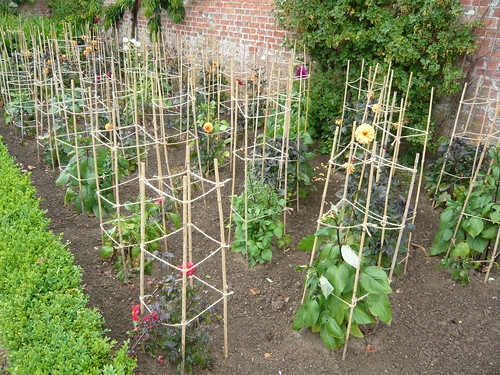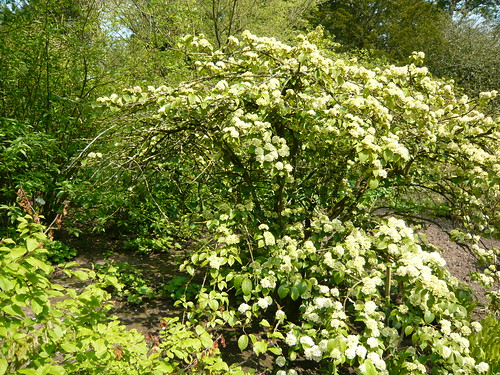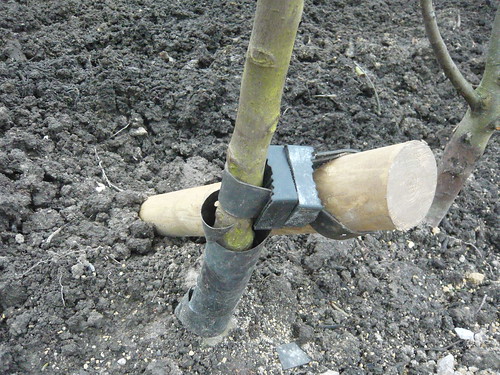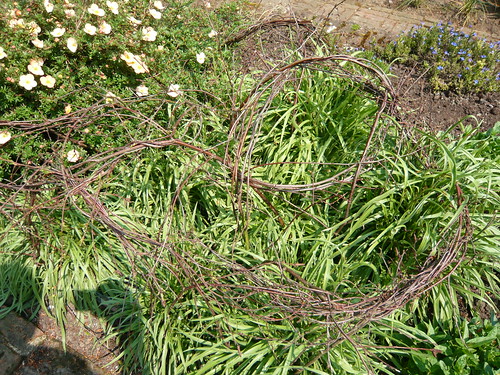Successful Staking for Perennials
There is an art and a science to successfully staking your perennials and young plants. It can make a significant difference in a herbaceous border. Dahlias like space to themselves and can then produce a large individual plant, you may think these stakes are a bit optimistic.

How to Stake Perennials
- Staking should be done when the plant is about two-thirds of its final size. This is often late April or May.
- You need to judge how wide the plant will grow as well as how high.
- Surround the plant with a ring of stakes about every 8-12 inches
- If using Hazel stakes, weave the tops together to form a cage that the plant stems can grow through. Bought wire mesh can achieve the same effect and will be hidden when the plant completes its growth.
- Cut the bottom of the stake at a sharp angle so it goes into the ground more easily.
- The life of organic stakes can be increased if you shave off the bark and pith on the part of the stake that will be pushed into the ground.
- Staking should be done when the plant is about two-thirds of its final size. This is often late April or May.
- You need to judge how wide the plant will grow as well as how high.
- Surround the plant with a ring of stakes about every 8-12 inches
- If using Hazel stakes, weave the tops together to form a cage that the plant stems can grow through. Bought wire mesh can achieve the same effect and will be hidden when the plant completes its growth.
- Cut the bottom of the stake at a sharp angle so it goes into the ground more easily.
- The life of organic stakes can be increased if you shave off the bark and pith on the part of the stake that will be pushed into the ground.
Types of Stakes for Perennials
- Birch, Willow and Hazel all make good stakes because they are pliable and twiggy.
- Bamboo canes are popular and can last 2-3 seasons.
- Plastic coated link stakes are designed to fix together. As long as the ground is even they work quickly
- Do not forget garden twine to support the plant. I like to tie string across as well as round but that depends on the weight of plant material and flowers.
- Tieing a stem to a single stake make a figure of eight loop around both to avoid cutting into the stem.

This picture above is of a large arching cage built to support a climbing flowering plant like a clematis support. There are no hard and fast rules for staking but try to make the end result unobtrusive.
Below is an angled stake for use where the wind is high and you want the tree or shrub to be able to sway around to build up strength.

